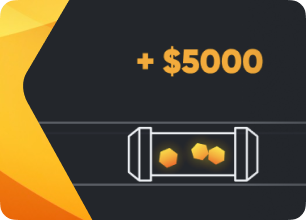


NVIDIA drivers update guide
nvidia-driver-update default installation version
We update the NVIDIA drivers in our repository regularly.
After conducting our tests, we decided to choose the latest stable version for installation by default if no arguments are given to nvidia-driver-update. This version supports all the latest NVIDIA RTX cards and also includes all performance optimizations.
Hiveon OS update drivers
Update or not update?
Before we start, let’s answer some typical questions:
Is it necessary to update?
No! If everything works for you - don’t touch.
Why then update?
New drivers include support for new cards such as 3060, 3060 Ti, 3070, 3070 Ti, 3080, 3080 Ti and 3090 series. Sometimes special optimization in some miners has a positive effect on the hashrate, especially with the LHR GPUs.
Still not changing your mind?
Then we will start.
Updating procedure
We strongly recommend using Hive Shell for proper driver update procedure. Of course, if you can use a local console - use it or if your rigs are in the same LAN with your PC/laptop then you can use for example SSH-clients such as standalone app PuTTY or working in browser ShellInABox instead of Hive Shell.
To update the drivers, use the nvidia-driver-update tool and perform two steps described below.
Sep 1: Select the necessary option from the table below.
| Option | Action |
|---|---|
| Default option for installation | download and install latest driver version |
| URL | download and install driver from URL (http/https/ftp) |
| 123 | download and install latest driver from series 123.* |
| 123.45.06 | download and install driver version 123.45.06 |
| -s | --stable | download and install STABLE driver version |
| -f | --force | force install to bypass some DKMS build errors and etc |
| -l | --list | list available driver versions (compatible with current kernel) |
| -e | --ext | use external drivers repository |
| -c | --cuda | sync symlinks to CUDA RT libraries with installed driver |
| -n | --nvs | reinstall nvidia-settings only |
| -r | --remove | remove downloaded driver packages except currently installed |
| -h | --help | display help |
| --repo[=URL] | use custom repository (specified by URL) (HTTP(S)/FTP) |
Step 2: Execute the necessary option the following format: nvidia-driver-update <option(s)>
[email protected]
Command examples:
nvidia-driver-update --force 455
nvidia-driver-update --force --ext --list
nvidia-driver-update --list --repo=ftp://192.168.1.1/drivers/
The driver update procedure takes 5-10 min if you’re using an SSD/HDD and 20-30 min if you’re using a slow drive such as a USB 2.0 stick.
If the update procedure will finish successfully, you will see the following message:

Now you can reboot your rig. After reboot, check driver version and miner functionality.
Update/downgrade to desired version
You can update the driver to the desired version. With Hiveon OS it’s quite simple to update NVIDIA drivers.
list the possible upgrades, type in the nvidia-driver-update --list command,
and then type the Hiveon OS will update the NVIDIA drivers.
Troubleshooting
Cannot update the driver properly
- Reboot rig>Stop mining>Run
nvidia-driver-update - Enable maintenance mode without loading drivers first than run
nvidia-driver-update - Check GPUs power cables, risers, etc. and repeat steps 1-2
- Try to update image via
hive-replaceif steps 1-2 did not help
Not enough disk space
- use disk-expand tool to enlarge disk to use all space
- remove unused drivers at /hive-driver-pack (to do this, send the
rm /hive-drivers-pack/NV*command to your worker - it will delete all the available NVIDIA driver archives) - uninstall miners by hpkg tool
Installation fail when unpacking driver
By default, the TMP directory is stored in RAM, so you need to enable logs to have some space: logs-on reboot
Nothing helps?
Troubleshooting steps to try:
- contact the support at [email protected]
- call community support on Telegram channel
- reflash the image
- remote update image via the hive-replace tool